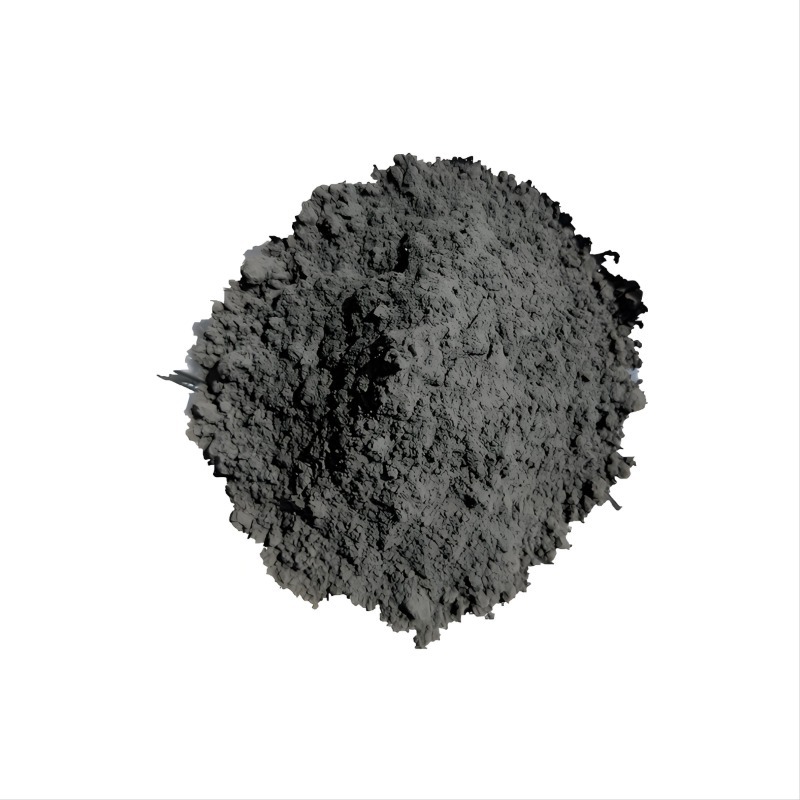Rhenium dioxide (ReO₂) 99.99% Re≥85.33% black-gray powder
Release time:
2025-01-15
Rhenium oxide, with its unique physical and chemical properties, diverse preparation methods, and potential application fields, plays an important role in the development of chemistry and related high-tech industries. As research continues to deepen, it is believed that it will shine in even more areas.

Rhenium dioxide (ReO₂), as an important compound of rhenium, typically appears as a black or dark brown solid, commonly in powder form. This unique color makes it highly recognizable among many compounds, serving as an intuitive reflection of its physical properties. From the perspective of crystal structure, it belongs to the rutile-type crystal structure, in which rhenium and oxygen atoms are arranged in an orderly manner according to specific rules, forming a regular and stable lattice system. Just like a meticulously constructed microscopic building, each atom is positioned in a specific location; this orderly arrangement not only determines its stability but also profoundly influences its other physical and chemical properties.
In terms of thermal properties, rhenium dioxide has a high melting point, around 1500°C, which means it possesses good high-temperature resistance, maintaining its solid state and chemical structure integrity in relatively high-temperature environments, thus enabling its use in some high-temperature-related applications. Regarding density, it has corresponding values that align with its chemical composition and crystal structure characteristics; this density property affects its behavior in different media, such as sedimentation and dispersion during the preparation of composite materials, where its density relates to the uniformity of mixing with other materials and the overall physical performance of the material.
Rhenium dioxide exhibits relative stability under normal temperature conditions, able to exist safely in a conventional atmospheric environment without easily reacting with oxygen, water vapor, and other common gases in the air. However, when environmental changes occur, such as in high-temperature environments or the presence of strong oxidizers or reducers, it exhibits active chemical reactivity.
In rhenium dioxide, rhenium is in the +4 oxidation state, which gives it dual chemical characteristics. On one hand, it has certain oxidizing properties, capable of acquiring electrons from other reactants in suitable chemical reaction systems, promoting reactions in the oxidative direction; on the other hand, it also possesses certain reducing properties, where it can lose its electrons when encountering stronger oxidizing substances, thus being oxidized to higher oxidation state rhenium compounds, such as rhenium trioxide. This flexibility in redox reactions allows it to play an important role in many complex chemical reactions, becoming a key link in constructing diverse chemical synthesis pathways.
In reactions with acids and bases, rhenium dioxide can react with strong acids to produce corresponding rhenium salts and water, although the specific reaction conditions may vary depending on the type of acid, concentration, and reaction conditions. Similarly, when it reacts with bases, it follows corresponding chemical laws, generating compounds containing rhenate ions; these reaction characteristics provide a basis for its application in compound preparation, material modification, and various chemical applications.
Specifications of rhenium dioxide:
| Purity | Specifications | Color |
| 99.99% | Re≥85.33% | Black-gray particles |
There are various common methods for preparing rhenium dioxide. Among them, the reduction method is more commonly used, for example, using high-valent rhenium oxides such as rhenium trioxide (Re₂O₇) as raw materials, selecting suitable reducing agents like hydrogen or carbon monoxide, and conducting reduction reactions under specific temperature, pressure, and reaction atmosphere conditions. Taking hydrogen reduction as an example, in a high-temperature environment filled with hydrogen, rhenium trioxide gradually reacts with hydrogen, being reduced to rhenium dioxide according to stoichiometric ratios. In this process, accurately controlling parameters such as reaction temperature, hydrogen flow rate, and reaction time is crucial to ensure the production of high-purity, well-crystallized rhenium dioxide. Thermal decomposition is also a feasible method, where specific rhenium-containing compounds, such as certain unstable rhenates or organic rhenium compounds, can be selected and decomposed by heating to obtain rhenium dioxide. However, this method requires strict control over the choice of raw materials and decomposition conditions, necessitating reasonable settings for heating temperature and heating rate based on the thermal stability characteristics of different raw materials to achieve efficient and high-quality preparation.
In the field of materials science, rhenium dioxide has potential application value due to its unique physical and chemical properties. For example, it can be added as a functional additive to certain high-temperature ceramic materials, enhancing the high-temperature stability, oxidation resistance, and mechanical properties of the ceramic materials, enabling better application in high-temperature industrial environments such as aerospace and metallurgy.
In the field of catalysis, rhenium dioxide also shows certain application prospects. It can serve as an active component or assistant in catalysts, participating in some organic chemical reactions and energy conversion-related catalytic reactions, utilizing its redox capabilities to regulate key indicators such as reaction rate and selectivity, aiding the development and realization of efficient and green chemical processes.
Rhenium dioxide, with its unique physical and chemical properties, diverse preparation methods, and potential application fields, plays an important role in the development of chemistry and related high-tech industries. With ongoing research, it is believed that it will shine in more areas.
Key words:
Recommend News
What is 3D printing metal powder?
2025-02-11
Comprehensive Analysis of Magnesium Fluoride
2025-02-10


Contact E-mail
Service Hotline
Company Address
1803, Block C, Wanda Plaza Office Building, Yuhua District, Shijiazhuang City, Hebei Province


